#Surface treatment
Text
Examining Different Surface Finishing Methods
With numerous surface treatment processes out there, understanding them can be daunting. Fear not! This blog by Solid Displays breaks down complex definitions and provides process diagrams, making it a breeze to grasp various surface treatment methods in just minutes!
1. PVD (Physical Vapor Deposition)
PVD is an industrial manufacturing process, belonging to a type of coating technology, primarily using physical means to heat or excite materials to deposit thin films. This technique, also known as vacuum coating or vapor deposition, is commonly employed in surface treatments of cutting tools, various molds, and in the manufacturing processes of semiconductor devices.
AD: Compared to chemical vapor deposition, physical vapor deposition has a wider range of applications. Almost all materials can be used to prepare thin films through physical vapor deposition.
DIS: The uniformity of film thickness is indeed a concern in physical vapor deposition.
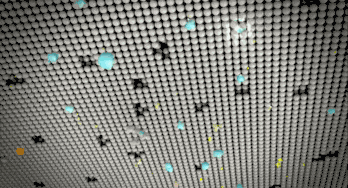
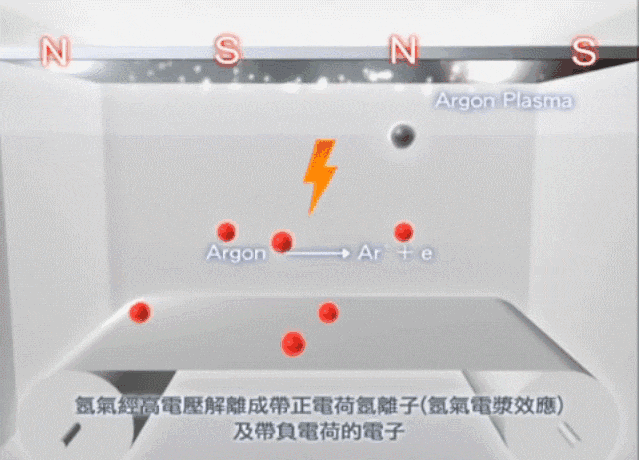
2. Mechanical Polishing
Mechanical polishing relies on the grinding and rolling action of very fine polishing particles, as well as cutting and plastic deformation of the material surface, to remove protrusions from the polished surface of the metal sample, thus obtaining a smooth surface.
AD: The equipment structure is relatively simple, and the price is generally lower compared to other methods.
DIS:
Mechanical polishing is challenging for polishing workpieces with complex shapes or surfaces featuring special patterns or textures.
It tends to generate metal dust, which can affect the health of polishing workers.
It requires a high level of skill from workers, making it difficult to control the consistency and stability of workpiece quality.
Mechanical processing inevitably leaves microscopic cracks and residual stress on the workpiece surface, which may affect the quality and lifespan of the workpiece and pose safety hazards for production.
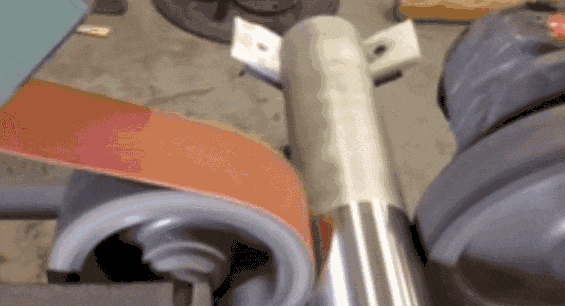
3. Chemical Polishing
Chemical polishing is a method that relies on the selective dissolution of surface irregularities on samples through the chemical etching action of chemical reagents, eliminating scratches and leveling surfaces.
AD: Chemical polishing does not require special fixtures or DC power supply equipment. It is simple to operate, energy-efficient, and not limited by the size or shape of the workpiece. Additionally, the direct cost of polishing is relatively low.
DIS: The pollution issue is particularly severe, as handling the waste liquid generated during the polishing process can increase costs.
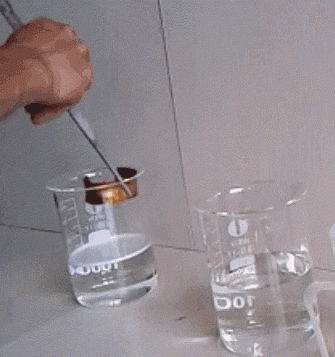
4. Electropolishing
Electropolishing, also known as electrochemical polishing or electrolytic polishing, utilizes the phenomenon of electrochemical dissolution generated by the anode in an electrolytic cell to selectively dissolve micro-protrusions on the anode surface, resulting in a smoother surface. In this process, the workpiece to be polished serves as the anode, while an inert metal acts as the cathode. Both poles are immersed in an electrolyte solution, and a direct current is passed through to achieve selective anodic dissolution, thereby increasing the brightness of the workpiece surface.
AD:
Consistent internal and external color, long-lasting luster, and the ability to smooth out concave areas that mechanical polishing cannot reach.
High production efficiency and low cost, suitable for large-scale sample preparation.
Enhanced corrosion resistance of the workpiece surface, applicable to all stainless steel materials.
DIS:
The quality of electrolytic polishing is influenced by the specifications of the electrolyte, as well as the current and voltage settings, making it difficult to determine the correct parameters.
Achieving satisfactory results for samples with cast iron or impurities is more challenging.
The electrolyte composition is complex, requiring careful attention to safety during use.

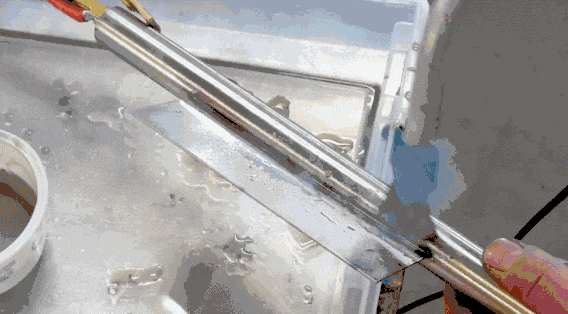
5. Spray Painting
spray painting is a coating method where the liquid is dispersed into uniform and fine droplets using a spray gun or disk atomizer, typically with the aid of pressure or centrifugal force, and applied to the surface of the object to be coated.
AD: Fast construction, good surface smoothness, no texture differences.
DIS: Spray painting machines are relatively expensive, and there is a significant amount of paint wastage.

6. Powder Coating
Powder coating is a process where powder coating material is sprayed onto the surface of a workpiece using powder coating equipment (electrostatic spray gun). Under the influence of static electricity, the powder evenly adheres to the surface of the workpiece, forming a powdery coating layer.
AD:
Powder coatings do not contain VOCs (volatile organic compounds), eliminating issues such as fire hazards, toxicity, and environmental pollution.
Minimal material loss and high utilization.
Easy control of coating thickness, high construction efficiency, low construction difficulty, and energy and labor-saving.
Scratch-resistant, impact-resistant, durable, and excellent chemical resistance.
DIS:
The investment required for manufacturing powder coatings and replacing coating equipment is significant.
Color matching for powder coatings can be challenging, and changing colors or types during coating is more cumbersome and costly.
Cannot be used on substrates with poor heat resistance such as plastic, wood, or paper.
Powder coatings are susceptible to clumping during storage due to pressure, temperature, and humidity fluctuations.

7. Sandblasting
Sandblasting, using compressed air as the driving force, involves high-speed jet streams of abrasive materials (such as copper ore sand, quartz sand, emery, iron sand, and sea sand) being sprayed onto the surface of workpieces, causing changes in the appearance or shape of the workpiece surface. Due to the impact and cutting action of the abrasives on the workpiece surface, the surface cleanliness and roughness of the workpiece are altered. This process improves the mechanical properties of the workpiece surface, enhancing fatigue resistance, increasing adhesion between the workpiece and coatings, prolonging the durability of the coatings, and facilitating coating leveling and decoration.
AD:
Sandblasting can quickly clean the surface of objects, and the surface quality after sandblasting is good, effectively prolonging the lifespan of objects.
Sandblasting can be adapted to various types of objects, whether they are made of steel, ceramic, or plastic.
Simple operation.
DIS:
Sandblasting generates a large amount of dust and waste, causing environmental pollution.
Sandblasting operations require certain knowledge and skills; incorrect operation may damage the surface of objects.
Sandblasting requires regular maintenance and cleaning to ensure its proper functioning.
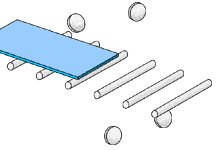
8. Shot Peening
Shot peening is a widely used surface strengthening process in factories. It involves bombarding the surface of workpieces with shot particles to implant residual compressive stress, thereby enhancing the fatigue strength of the workpiece through cold working. This technique is extensively used to improve the mechanical strength, wear resistance, fatigue resistance, and corrosion resistance of components. Types of shot particles include steel shot, cast iron shot, glass beads, ceramic beads, etc.
AD:
Simple equipment, low cost
Not restricted by the shape and position of the workpiece
Convenient operation
DIS:
Poor working environment
Low unit output
Lower efficiency compared to shot blasting
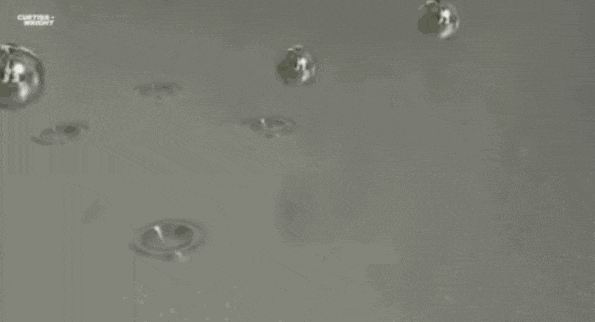
9. Electroplating
Electroplating is a process that involves using electrolysis to deposit a metal film onto the surface of metal or other material components. This process helps prevent metal oxidation (such as rusting), enhances wear resistance, conductivity, reflectivity, corrosion resistance, and improves aesthetics.
AD: Attractive surface appearance, excellent corrosion resistance, strong mechanical properties.
DIS: Improper handling of generated wastewater and exhaust may lead to environmental pollution, high energy consumption, and potential health hazards to humans.

10. Anodizing (Anodic Oxidation)
Anodizing refers to the process where aluminum and its alloys, under specific electrolyte and process conditions, form an oxide film on the surface of aluminum products (the anode) due to the action of an external electric current.
AD:
Anodizing can form a dense oxide film on the surface of metal, effectively preventing oxidation and corrosion.
It increases the hardness of the metal surface, making it more resistant to wear and scratches, thus extending its lifespan.
Different colors of oxide films formed on the metal surface enhance its aesthetic appearance and decorative properties.
The roughness of the metal surface increases after anodizing, which promotes adhesion between coatings and substrates, making the coating more durable.
An insulating oxide film formed on the metal surface improves its insulation properties.
DIS:
Particularly when dealing with large areas or thicknesses of metal products, significant energy consumption increases production costs.
Strict control of processing conditions and operating standards is required, leading to longer processing times that may affect production efficiency.
The oxide film formed during anodizing may affect the dimensions and shapes of the metal, posing a certain risk to the normal operation of high-precision or high-demand components.
The anodizing process is mainly suitable for certain metals such as aluminum, magnesium, and titanium. For other metals like steel, copper, and silver, the anodizing process may not be applicable or effective.
Although the oxide film formed by anodizing has high hardness and corrosion resistance, it may be damaged under certain conditions such as mechanical wear or chemical corrosion, requiring regular maintenance and repair.
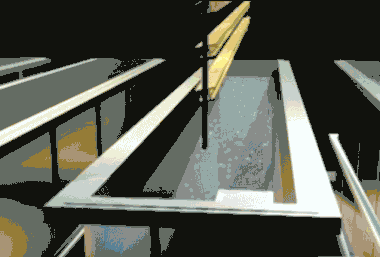
11. EPD (Electrophoretic deposition)
Electrophoretic deposition is a process where, under the influence of an applied voltage between positive and negative poles, charged paint particles in an electrophoretic coating migrate toward the cathode. They react with alkaline substances generated on the cathode surface, forming insoluble deposits on the surface of the workpiece.
AD:
Safety in production: Electrophoretic coating uses water as a solvent, making it non-toxic and non-flammable.
High-quality coating: Electrophoretic paint has strong adhesion, uniform thickness, and excellent corrosion resistance.
High utilization rate: Electrophoretic paint is efficiently used.
DIS:
Limited applicability to small and medium-sized parts due to equipment constraints.
Restricted to conductive substrates and single-layer coating: Once a part is coated with electrophoretic paint, it becomes an insulator, preventing further electrophoretic coating.
Limited color options: Electrophoretic paint colors are predominantly dark.
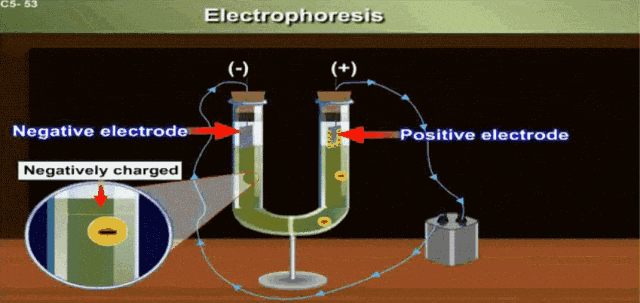
12. Micro-arc Oxidation
Micro-arc oxidation, also known as micro-plasma oxidation, is a process where, through a combination of electrolyte and specific electrical parameters, an instant high-temperature and high-pressure effect is generated on the surface of aluminum, magnesium, titanium, and their alloys via arc discharge. This process results in the growth of a ceramic coating layer primarily composed of metal oxide on the substrate.
AD:
The metal oxide layer formed by micro-arc oxidation is metallurgically fused with the substrate, resulting in high bond strength. The ceramic layer has a dense structure, good toughness, and exhibits characteristics such as wear resistance, corrosion resistance, high-temperature shock resistance, and electrical insulation. It can also meet requirements for thermal insulation, catalysis, antibacterial properties, etc.
The process has a wide range of applications and is environmentally friendly during processing.
DIS: The surface may be rough and uneven.

13. Metal Brushing
Metal brushing is a manufacturing process involving repeatedly scraping aluminum plates with sandpaper to create lines. The main process consists of three parts: degreasing, sanding, and washing. During the brushing process, a special film technique applied after anodizing treatment enables the metal surface to form a film layer containing metal components. This process makes each fine scratch clearly visible, allowing the metal to exhibit a subtle sheen amidst its matte finish.
AD:
Wear-resistant, high-temperature-resistant, and corrosion-resistant.
Easy maintenance and cleaning in daily use.
Fine texture.
Long lifespan.
DIS: Relatively expensive price.
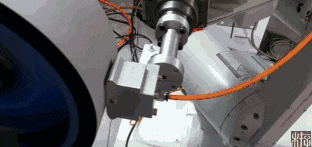
14. Etching
Etching is a technique that removes part of the material through chemical reactions or physical impacts. Etching typically refers to photolithographic etching, where after exposure and development, the protective film on the area to be etched is removed. When exposed to a chemical solution during etching, it dissolves and corrodes the material, creating a concave or hollow effect.
AD:
Metal etching processes can create extremely precise shapes and patterns, and the consistency of the metal etching process ensures that each product in mass production has the same quality and characteristics.
Etching processes can be applied to various metals, including copper, nickel, gold, silver, iron, and some non-metallic materials.
Metal etching processes generate relatively little waste, and in many cases, waste can be recycled and treated.
High efficiency.
DIS:
Etching processes require precise control of factors such as chemical solution concentration, temperature, and etching time, leading to high complexity.
High equipment and manufacturing costs: Etching processes require specialized equipment and materials such as etching tanks, power supplies, heat exchangers, etc. Additionally, precise control of the production process is needed to ensure product quality and consistency.
Workers may be exposed to hazards such as chemical substances, high temperatures, and noise.
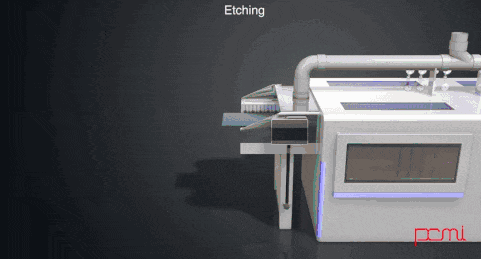
15. IMD (In-Mold Decoration technology)
IMD, also known as non-painting technology, is an internationally popular surface decoration technique. It involves applying a surface-hardened transparent film, printing the pattern layer in the middle, and injecting the back molding layer. The ink is sandwiched between layers, making the product resistant to friction, preventing surface scratches, and maintaining color brightness for an extended period without fading.
AD:
Strong scratch resistance and corrosion resistance.
Long service life.
Excellent three-dimensional effect.
Strong resistance to dust, moisture, and deformation.
Color can be changed as desired.
Patterns can be easily modified.
DIS:
Long lead time.
Prone to issues such as film detachment and distortion.
High defect rate in products.
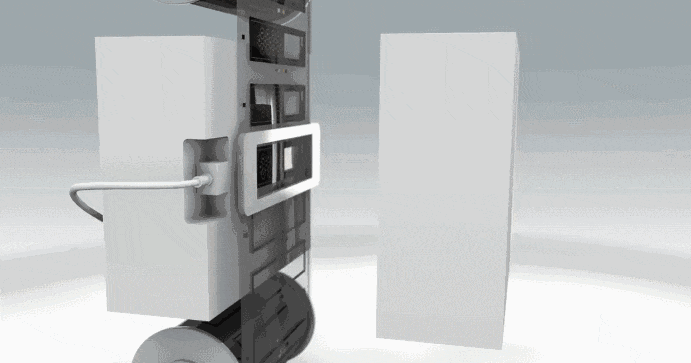

16. OMD (Out Mold Decoration)
OMD is an extension of IMD (In-Mold Decoration) technology that integrates visual, tactile, and functional elements. It combines printing, texture structure, and metallization characteristics to achieve 3D surface decoration.
AD:
Substrate material is not limited, can be metal or plastic.
Can achieve 3D shapes.
Can encapsulate internal structures (back-molding).
Allows for simultaneous processing of multiple small products.
DIS:
High equipment investment.
Unable to achieve complex 3D shapes.
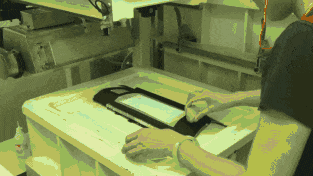
17. Laser Engraving
Laser engraving, also known as laser etching or laser marking, is a surface treatment process based on optical principles. It involves using a laser beam to engrave permanent marks on the surface of a material or within transparent materials.
AD:
Fast marking speed, low cost
Attractive patterns, high resolution, and high precision
Wear-resistant
DIS: Limited color options
18. EDM (Electrical Discharge Machining)
EDM is a specialized machining method that utilizes the erosive effect produced by pulsed discharges between two electrodes immersed in a working fluid to remove conductive materials. It is also known as spark machining or spark erosion machining. The tool electrode is typically made of materials with good conductivity, high melting points, and easy machinability, such as copper, graphite, copper-tungsten alloy, and molybdenum. During the machining process, there is wear on the tool electrode, but it is usually less than the material removal from the workpiece metal, and in some cases, it can be negligible.
AD:
Capable of machining materials and complex-shaped workpieces that are difficult to cut using conventional cutting methods, such as sharp corners.
Does not produce burrs and tool marks.
Tool electrode material does not need to be harder than the workpiece material.
Enables automation due to the direct use of electrical energy.
DIS: Low efficiency.
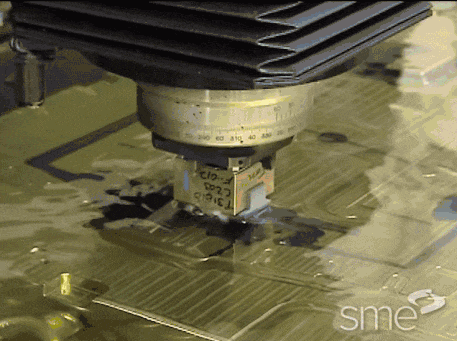
19. Laser Etching
Laser etching involves the treatment of steel surfaces with high-energy density lasers to create patterns such as snake skin, etchings, pearlescent finishes, or other forms of textures.
AD: High welding accuracy and small heat-affected zone, suitable for repairing precision molds.
DIS:
Welding wire is relatively expensive, leading to lower efficiency.
Bulky equipment makes mobility difficult, and unsuitable for on-site operations. Welding repairs need to be performed on a workbench, making it impractical for large molds or workpieces.
Repairing irregular-shaped defects can be challenging compared to straight-line repairs.
Large heat-affected zones during welding repairs increase the likelihood of workpiece sagging, deformation, and undercutting.
Lower welding accuracy, unable to meet the requirements of high-precision molds.
Many mold repairs require preheating, insulation, and other processes, making them cumbersome and time-consuming.
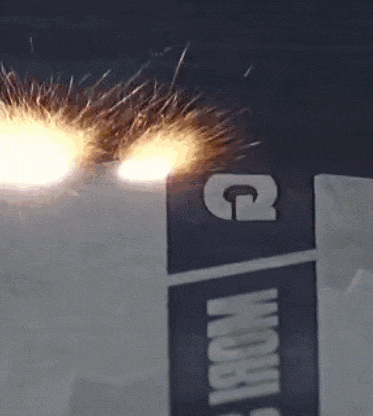
20. Pad Printing
Pad printing, also known as tampon printing, is a specialized printing method that involves using a steel (or copper, thermoplastic) plate with an engraved design. A curved surface pad made of silicone rubber material is used to pick up ink from the plate’s surface. The ink is then transferred onto the desired object’s surface by pressing the pad against it, resulting in the printing of text, patterns, or other images.
AD:
Wide application range: Pad printing is commonly used on products with recesses or on the back of objects where screen printing is not feasible. It can achieve clean printing results even on uneven surfaces.
Convenient operation: Equipment can be operated semi-automatically or fully automatically, with low labor costs and high production efficiency.
DIS:
Ordinary results.
Pad printing cannot create patterns with large areas.
Due to the clear edges of the recesses processed by steel plates, gradient colors cannot be produced.
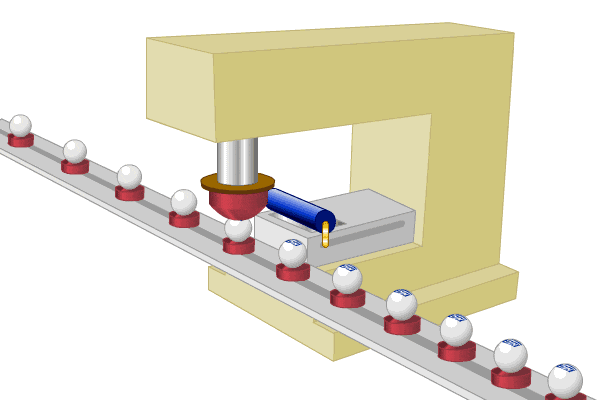
21. Screen Printing
Screen printing refers to a printing method that uses a screen as the printing plate, which is made into a screen printing plate with images or text through photosensitive plate-making methods. Screen printing consists of five main elements: the screen printing plate, squeegee, ink, printing table, and substrate. The basic principle of screen printing is that the ink can pass through the mesh holes of the image/text part of the screen printing plate, while the non-image/text part of the mesh holes cannot pass through the ink. During printing, ink is poured into one end of the screen printing plate, and a certain pressure is applied to the inked area on the screen printing plate using a squeegee. At the same time, the squeegee moves steadily towards the other end of the screen printing plate, and the ink is squeezed from the mesh holes of the image/text part onto the substrate.
AD:
Screen printing can use various types of inks: oil-based, water-based, synthetic resin emulsion-based, powder, etc.
Screen printing plates are flexible and have a certain elasticity, suitable for printing on soft materials such as paper and fabric, as well as on hard objects such as glass and ceramics.
Screen printing requires low printing pressure, making it suitable for printing on fragile objects.
Thick ink layer with strong coverage.
Not limited by the surface shape or size of the substrate. Screen printing can be applied on flat surfaces, as well as on curved or spherical surfaces. It is suitable for printing on both small and large objects.
DIS:
Only one color can be printed at a time.
Plate-making and film output costs are relatively high, making it unsuitable for small-batch production.
Poor performance when used on uneven surfaces.
Ink quantity cannot be easily controlled.

22. Direct Thermal Printing
Direct thermal printing refers to a method where a thermal-sensitive agent is coated on paper to create thermal recording paper. When subjected to heat, the thermal recording paper causes a physical or chemical change in the substance (coloring agent) to produce an image.
AD:
Fast printing speed and low noise level.
Clear printing and easy to use.
DIS: Direct thermal printers cannot print duplicates directly, and the printed documents cannot be permanently archived.
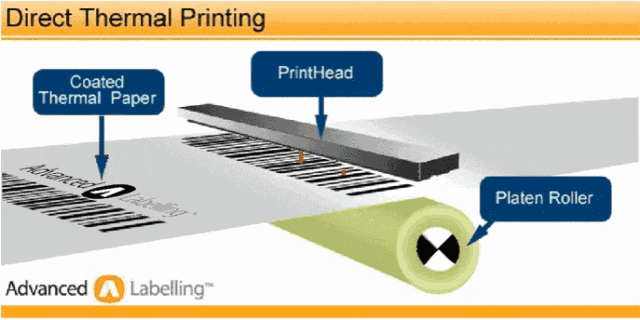
23. Thermal Transfer Printing
Thermal transfer printing works by first digitally printing the desired image onto transfer paper using specialized transfer ink in an inkjet printer. Then, a dedicated heat transfer machine applies high temperature and pressure to accurately transfer the image onto the surface of the product, completing the printing process.
AD:
Simple printing process with accurate positioning.
Does not cause damage to the material.
Suitable for printing images with color gradients and on multiple materials.
DIS:
Poor breathability.
Fine cracks may appear in the printed pattern on clothing when stretched.
Poor durability.
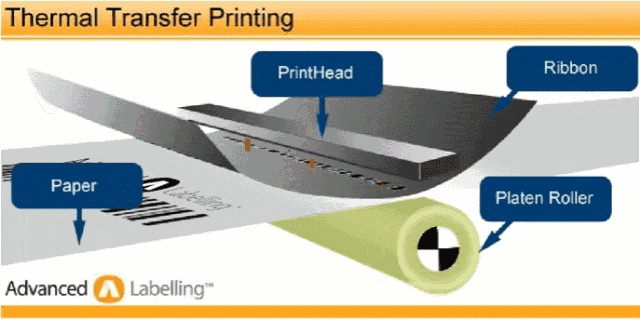
24. Planographic Printing
Planographic printing is a printing method that uses flat printing plates. It is the most widely used printing process globally and is also employed in the manufacturing of semiconductor and MEMS devices. Planographic printing, also referred to as “offset printing” or “indirect printing,” is a common commercial printing technology. It involves transferring images or text from flat printing plates onto rubber blankets, which are then used to print onto paper or other materials.
AD:
Fast printing speed, relatively low printing cost, and high print quality.
Suitable for large-scale and repeat printing jobs.
DIS:
Requires preparation of preliminary work such as plate making and setup.
Not suitable for short-run printing and customization.
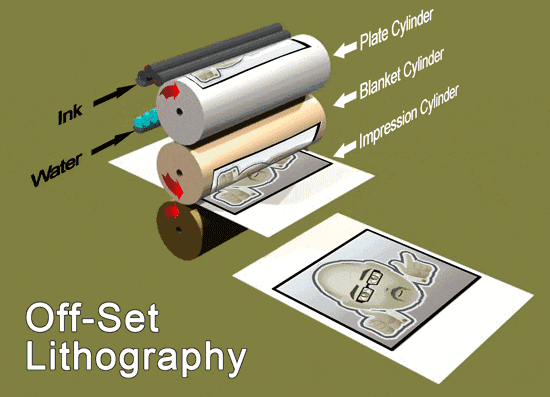

25. Curved Surface Printing
Curved surface printing involves placing ink into engraved plates with text or patterns, and then transferring them onto curved surfaces. The text or patterns are then transferred onto the surface of the molded product using the curved surface. Finally, methods such as heat treatment or ultraviolet light exposure are used to cure the ink.
AD:
Wide applicability: It can be used for printing on various curved surfaces, such as cylinders, spheres, and irregular shapes.
High customization: It can print complex patterns, text, and images on curved surfaces, achieving personalized customization.
High production efficiency, and stable quality.
DIS:
Higher cost due to the need for more equipment and technical support.
Subject to limitations of printing machinery and technology, some specific shapes of curved surfaces may not be fully covered.
Design complexity may increase as designers need to consider the variations and distortions of curved surfaces.
Ink curing in surface printing may be uneven or incomplete due to the influence of the surface shape.

26. Hot Stamping
Hot stamping refers to a process where hot stamping materials or hot stamping patterns are transferred onto objects such as paper, cardboard, fabric, or coated materials using heat and pressure. Hot stamping is commonly used in the binding process, especially on covers.
AD:
Precision and meticulous craftsmanship, with minimal equipment errors, resulting in finer patterns on hot-stamped items.
Capable of performing three-dimensional hot stamping.
Energy-efficient, reducing environmental pollution, and offering fast hot stamping speeds.
DIS:
The high precision requirement of the hot stamping process for equipment leads to increased costs.
The process involves relatively complex and intricate procedures.

26. Hot Stamping
Hot stamping refers to a process where hot stamping materials or hot stamping patterns are transferred onto objects such as paper, cardboard, fabric, or coated materials using heat and pressure. Hot stamping is commonly used in the binding process, especially on covers.
AD:
Precision and meticulous craftsmanship, with minimal equipment errors, resulting in finer patterns on hot-stamped items.
Capable of performing three-dimensional hot stamping.
Energy-efficient, reducing environmental pollution, and offering fast hot stamping speeds.
DIS:
The high precision requirement of the hot stamping process for equipment leads to increased costs.
The process involves relatively complex and intricate procedures.

26. Hot Stamping
Hot stamping refers to a process where hot stamping materials or hot stamping patterns are transferred onto objects such as paper, cardboard, fabric, or coated materials using heat and pressure. Hot stamping is commonly used in the binding process, especially on covers.
AD:
Precision and meticulous craftsmanship, with minimal equipment errors, resulting in finer patterns on hot-stamped items.
Capable of performing three-dimensional hot stamping.
Energy-efficient, reducing environmental pollution, and offering fast hot stamping speeds.
DIS:
The high precision requirement of the hot stamping process for equipment leads to increased costs.
The process involves relatively complex and intricate procedures.
27. Water Transfer Printing
Water transfer printing is a technique that transfers printed images or graphics from a flat surface onto the surface of different materials using water. It is divided into two types: water immersion transfer and water overlay transfer (curved surface overlay). Water immersion transfer is mainly used for transferring text and photographic images, while water overlay transfer is primarily used for complete transfer over the entire surface of an object.
AD:
Aesthetic appeal: It can transfer any natural patterns, photos, and graphics onto products.
Innovation: Water transfer printing technology can overcome the limitations of traditional printing methods such as heat transfer, offset printing, screen printing, and surface coating, allowing for the creation of complex shapes and angles.
Versatility: Applicable to surface printing on hardware, plastics, leather, glass, ceramics, wood, etc. (not suitable for fabric and paper).
Personalized design.
Efficiency: No need for plate-making; direct printing and immediate transfer.
DIS:
Transferred images or graphics are prone to deformation.
Fully manual operation leads to high labor costs and low production efficiency.
28. Flat Screen Printing
Flat screen printing involves fixing printing molds onto square frames, which are usually made of polyester or nylon mesh (screen) with hollow patterns. The patterned areas of the screen allow ink to pass through, while the non-patterned areas are sealed with a polymer film layer to block the mesh openings. During printing, the screen is pressed tightly against the fabric, ink is poured onto the screen, and a squeegee is used to repeatedly scrape and press the ink through the patterns onto the fabric surface.
AD:
Convenient plate-making process, with large repeat lengths, multiple color matching options, ability to print fine patterns without color bleeding, high ink volume, and the capability to achieve a three-dimensional effect. Suitable for printing on silk, cotton, synthetic fabrics, and knitted fabrics, especially for high-end fabrics with small batches and multiple variety requirements.
Hand scraping of the ink on the hot table allows for unlimited printing repeats.
DIS:
Due to the long distance between color frames, it is difficult to achieve overlapping colors.
Manual fabric placement, manual lifting of the frame, and hand scraping of the ink result in high labor intensity and uneven ink scraping.
The heat source for the hot table is typically steam heating, though some use electric heating, which consumes a lot of electricity and is prone to accidents.
29. Calendering
Calendering, also known as pressing, is the final process of finishing leather. It involves using the plasticity of fibers under heated conditions to flatten or create parallel fine diagonal lines on the surface of the fabric, enhancing the gloss of the fabric. This process is typically carried out using a swing calender machine or a bottom leather rolling machine. Usually, it involves two passes: the first pass compresses the leather body, done after even wetting, followed by stacking to balance moisture content. The second pass is for calendering, which results in a smooth and glossy leather surface with a compacted leather body, thus achieving the finished leather.
Conclusion
With such an array of surface treatment processes available, navigating through their definitions and intricacies can be daunting. However, this blog streamlines the information by organizing definitions and process diagrams, making it effortless to grasp the various surface treatment techniques in just a few minutes. Each method’s advantages and disadvantages are neatly presented, enabling a quick understanding of their applications, efficiencies, and limitations.
0 notes
Text
Plasma Treatment | Lectro Engineering
Plastic Surface Treating Machine!
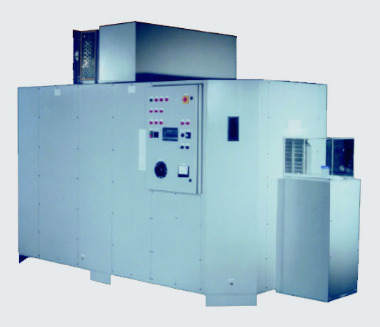
Unlock the hidden potential of plasma treatment with Lectro Engineering.
Say goodbye to expensive and time-consuming treatments – our technology is efficient, cost-effective, and delivers amazing results. Trust us for all your industrial needs!
0 notes
Text
Comprehensive surface treatment process of materials
Surface treatment is a process that artificially forms a layer on the surface of a base material that has different mechanical, physical and chemical properties from base material.Purpose of surface treatment is to meet corrosion resistance, wear resistance, decoration or other special functional requirements of product. Our more commonly used surface treatment methods are mechanical grinding,…

View On WordPress
#Anodic Oxidation#electrolytic polishing#Electroplating#electroplating surface treatment#Electropolishing#Galvanizing#Hydro Transfer Printing#In-Mold Decoration#Metal Wired#metallurgical bonding#metallurgical bonding technology#Pad printing#Screen printing#Surface treatment#surface treatment process#Surface treatment technology#vacuum electroplating#vacuum electroplating process#Vacuum Metalizing#Vacuum plating
0 notes
Text
Within the bustling hubs of industries, there's a crucial element that often goes unnoticed: the power of industrial coatings. Whether you're steering the wheel of a burgeoning startup or overseeing operations at an expansive industry giant, it's imperative to understand the pivotal role industrial coatings play. Think of these coatings as advanced protective shields – akin to an invisible barrier – crafted to guard varied surfaces like steel and concrete. Read the article to know why these coatings are an unmissable asset in any industrial environment.
#Industrial Coatings#Surface Protection#Durability#Corrosion Resistance#Industrial Standards#Performance Coatings#Surface Treatment#Coating Applications#AGAS
0 notes
Text
How do you think of this design product?it is based on the construction and surface treatment to define the name,it is called "6 Layer PCB With Immersion Gold (ENIG)",if you feel interest in it,welcome contact me to know more details
#6 Layer PCB#Immersion Gold#ENIG#surface treatment#pcb design#lamination PCB#PCB product introduction
0 notes
Text
How Zinc Plating Elevates Laser Cutting Benefits

In contemporary manufacturing, precision and efficiency hold immense importance. One of the key technologies revolutionizing the manufacturing industry is laser cutting. It's a technique that enables the precise cutting of various materials, from metals to plastics, with minimal waste and exceptional accuracy. However, to truly elevate the benefits of laser cutting, one often overlooked yet crucial process comes into play: zinc plating.
Understanding Laser Cutting
Before we delve into the symbiotic relationship between laser cutting and zinc plating, let's take a moment to understand the core principles of laser cutting.
The Precision of Laser Cutting
Laser cutting is a high-precision technique that utilizes a focused laser beam to make intricate cuts in various materials. Its precision is unmatched, making it ideal for industries that demand accuracy, such as aerospace and medical device manufacturing.
Materials Compatible with Laser Cutting
Laser cutting can be employed on a wide range of materials, including:
Metals
Plastics
Wood
Glass
Ceramics
The Role of Zinc Plating
Now that we have a grasp on laser cutting, let's explore how zinc plating augments its benefits.
Enhancing Durability
Zinc plating service involves coating a material, often steel or iron, with a layer of zinc. This protective layer acts as a shield against corrosion and rust, significantly prolonging the lifespan of the material. When materials are laser cut, this protective layer remains intact, ensuring the longevity of the cut components.
Improved Precision
Zinc plating also provides a smoother surface finish on the material. This smoother surface allows for even more precise laser cutting, reducing the chances of imperfections in the final product.
Advantages of Zinc Plated Laser Cutting
Now, let's examine the tangible benefits of combining zinc plating with laser cutting.
Corrosion Resistance
One of the standout advantages is the corrosion resistance of zinc-plated laser-cut components. This makes them ideal for outdoor applications and environments prone to moisture, ensuring the products maintain their integrity over time.
Cost-Efficiency
While the initial investment in zinc plating might seem like an added cost, it pays off in the long run. The extended lifespan of laser-cut components translates to reduced maintenance and replacement costs, ultimately saving businesses money.
Versatility
Zinc-plated laser-cut materials are incredibly versatile. They find applications in various industries, from automotive to architecture, thanks to their durability and precision.
Conclusion
The combination of laser cutting and zinc plating, a surface treatment, is a match made in manufacturing heaven. It elevates the precision, durability, and versatility of laser-cut components, making them invaluable in numerous industries. As technology advances, this dynamic duo is set to reshape the manufacturing landscape.
For any clarifications or queries, please feel free to contact us:
Mobile: +91–9311813406
Email ID: [email protected]
Website: www.sarcoatings.com
0 notes
Text
Powder Coating in Furniture Manufacturing: A Case Study with Yadan Steel Furniture
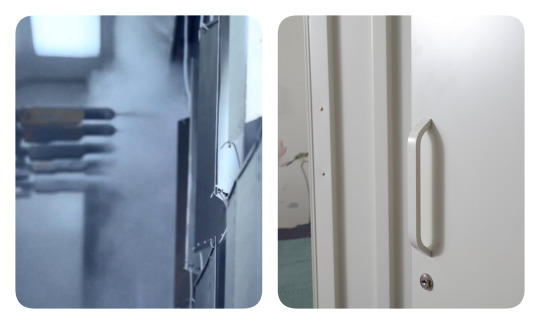
If you follow us often, you will know that we are constantly mentioning that at Yadan Steel Furniture, we stick our core values on environmental protection and sustainability. So on what grounds do we have the audacity to assert that our products are environmentally friendly and healthy? The answer lies in the processing procedures. One of our key processes is the electrostatic powder spraying for coating. Today we will talk to you about this process.
What is powder coating?
Powder coating is a type of surface treating technique that involves the application of a dry, solvent free finely ground powder to a surface, which is then heated to fuse the powder particles together and form a smooth, durable finish.
The powder is made by mixing special resin, pigments and fillers, curing agent and other additives in a certain proportion, and then going through hot extrusion and powder sieving. After being stored and stabilized at room temperature, it is sprayed electrostatically or dipped in a fluidized bed, then heated and baked to melt and solidify to form a smooth and bright permanent coating film, which can achieve decoration and anti-corrosion purposes.
Stunning examples of powder-coated steel furniture from Yadan Steel Furniture:
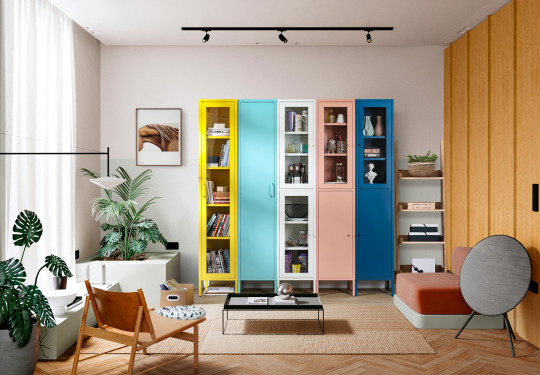
Visit our site to see more details about it:
How we do powder coating at Yadan Steel Furniture
This illustration in motion says clearly about the powder coating process when we process steel furniture at Yadan. We can see that in our workshop, we have an interlocking, strictly executed production line divided into many steps. After shearing, extruding and deforming the steel plate on the shape, we started to work on its surface.
We put steel panels in this long tank (at around 0:35) to remove impurities that may interfere with the coating's adhesion to the surface, and then add silane coupling agents to make the coating more tightly bonded. Various washing and rinsing cycles are applied throughout the process to remove remaining cleaning agents or other residues.
When all the conditions are set, we can do the powder coating process. Steel panels are suspended on an overhead conveyor line (at around 0:22), and an electrostatic spraying machine is used to spray a dry powder material on the surface of the panels. By electrostatic interaction, the powder will be evenly adsorbed on the surface to form a powdery layer. This powdery layer is then baked, leveled and cured at high temperature, and becomes the final coating with a range of good properties.
The difference between powder spraying and traditional painting
Advantages of powder coating:
1. Powder coating does not contain solvents or volatile toxic substances, which is beneficial to the occupational health of workers at the production process, and also harmless to the environment and human body as a finished product.
2. The material utilization rate is high, with the excessive powder sprayed subject to recycling. The overall utilization rate during powder coating process is over 95%.
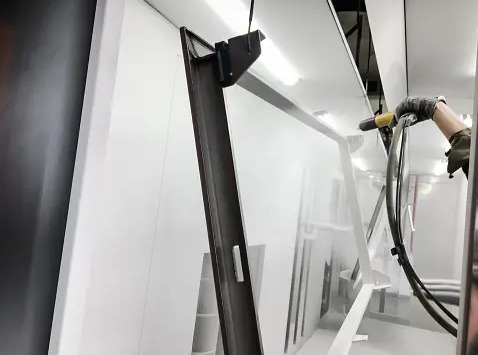
3. It also has excellent anti-corrosion properties, as this technique will form a hard, protective layer highly resistant to moisture, chemicals, and other environmental factors that can cause corrosion over time.
4. The powder coating process also has aesthetic advantages. It allows for a thicker, fuller coating layer and more even application of color. It also has a wide range of colors and textures of finishes for choice, with a variety of vibrant and lively colors, and glossy, matte or metallic styled surface qualities.
Please visit our site to explore more:

Traditional painting:
It entails the use of a large amount of organic solvent-based paint, which will cause pollution and public hazards due to volatilization. It also has a strong odor, and is prone to causing poisoning incidents and fires.
Conclusions from the comparison:
Therefore, compared with traditional solvent-based coatings, powder coating has the advantages of safer, less pollution, good adaptability, high efficiency and no dependence on petroleum as raw material.
This video provides an illustrative explanation:
youtube
Attached: the formaldehyde-free test report for Yadan Steel Furniture’s products
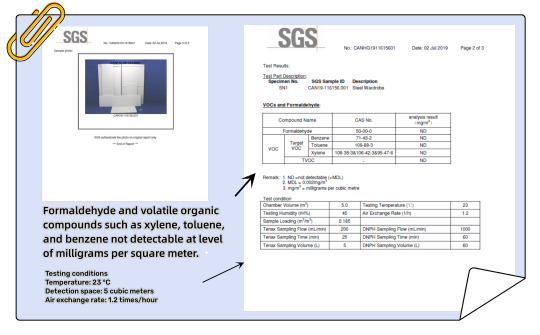
It shows that at normal temperature, in a detection space of 5 cubic meters with an air exchange rate of 1.2 times per hour, formaldehyde and volatile organic compounds such as xylene, toluene, and benzene cannot be detected at a measurement level of milligrams per square meter.
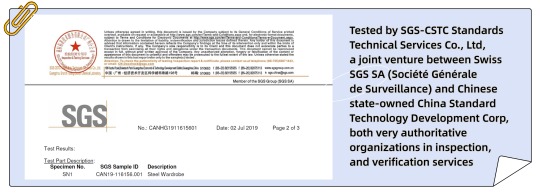
This is a test we invited professional organization SGS-CSTC Standards Technical Services Co., Ltd to do. The body is a joint venture between Swiss SGS SA (Société Générale de Surveillance) and Chinese state-owned China Standard Technology Development Corp, both very authoritative organizations in inspection, verification, testing, and certification services.
#interiordesign#furniture#homedecor#import#powder coating#surface treatment#processing#production line#workmanship#Youtube
1 note
·
View note
Link
The experts of Surface International provides a latest blog on Sand Blasting Machine. It describes the major tips to choose before purchasing it. Grab it, for the latest update.
#Sand Blasting Machine#shot blasting#surfacepreparation#surface treatment#surface finishing#Abrasiverecovery#abrasiveblasting
0 notes
Text
Kaeyappreciation post!
Kaeya is wonderful in a sense that he:
Has a penmanship described as "Beautiful Handwriting". He for sure worked on that.
Willingly spends his time making sure his outfit looks perfect
Is well-loved by Mondstadt and the Dawn Winery staff
Is described to like a prince, both in looks and in actions
Is shown to be gentle and caring to children and elderly, most seen with Klee and the staff from Dawn Winery
Is a great listener and, therefore, also knows what gifts to buy based off of something someone said in passing
Is predominantly kind- unafraid to help out and defend someone in need. His first reaction is always kindness, and worry about covering up that kindness later on
But Kaeya also has his moments where he:
Says things out of pocket with enough alcohol in his system. Things that usually lead to shame and regret.
Would rather give others the credit for his hard work if he could help it
Intentionally makes himself look suspicious by withholding information and only throwing tidbits that are not of substance
Has sadist tendencies, which affects how he treats both his (cavalry) company and his enemies
Can and will use underhanded tactics to gain the upper hand
Rarely ever says what he truly wants to say
Has a fake smile. Usually lies or only deals with half truths.
He is such a complex character. I really do want people to appreciate him and his intricacies more. The fact that his entire personality and story is done so well and continues to actually grow and expand as the story progresses is something that genuinely makes me want to keep watch of him. I have never, in all my fandoms, stuck to a character as long as I did with Kaeya, and honestly? I know I'm not alone with this.
Look at how well they made our boy!
#the longest other characters have lasted with me is 6 months at most but kaeya has been eating my brain for YEARS#kaeyachi randoms#kaeya#kaeya alberich#note: everything listed here is from the kaeya hangout/limited events/character stories. None of these are HCs#but no seriously look at how much we have of him and yet all of this is still barely scratching the surface augh#im gonna keep digging#HIS FLAWS ARE APPRECIATED IN THIS HOUSE#room for growth and error? thats very cool. give me more pls#give kaeya the dan heng treatment 🙏#bro's character is legit getting more and more detailed its amazing like ayo why is genshin leaving other characters in the dust?!#look at how they made kaeya and compare it with others who have lower lore relevance...#some characters stopped growing after they were introduced :(#tbh the fact that genshin released a starter character this amazing made several of us stick to the game#thats amazing tbh...
187 notes
·
View notes
Text
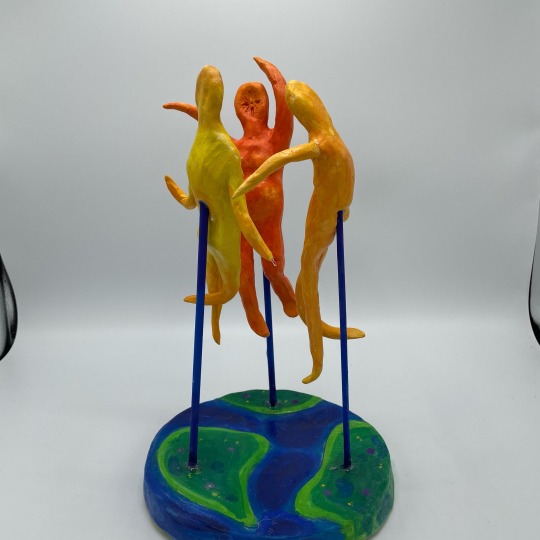


here is my most recent ceramics piece :-) i call it "dearest planet"
70 notes
·
View notes
Text
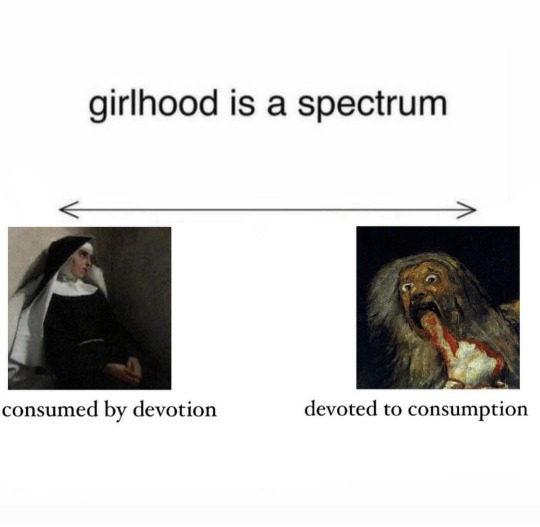
#girlhood!!!!! girlhood amirite???!#feel free to reblog but unrelated tags ahead:#unrelated vent tags but like i cannot explain the acid trip of being in my international law class#and mentioning anything about palestine and that fucking CRACKHEAD bitch !!!everytime!!! turns to me and says:#“as a white south african how do you feel about the treatment of white farmers” girl im gonna fucking kill you#this genuinely keeps unearthing a biblical anger in me. i mean my mother is just a wicked person but my dad really let me grow up#without a tradition. being without a tradition is about the most dreadful thing my dad ever did to me thanks you FUCK!#i cant reconcile my identity with anything. caught somewhere between the way that bitch knows how much i hate afrikaans#exclusively speaking to me in afrikaans and my dad who taught me nothing. okay then !!! anyway like obvi not thinking abt having kids at 22#but definitely sure now that im not having kids ever because this corrosive resentment rears its head in mundane moments#bc its always just under the surface#anyway wONT ANYONE THINK ABOUT THE POOR WHITE FARMERS!!!!!!!!!!#lol.
43 notes
·
View notes
Text
Watching Hobie and Miles in Atsv was like meeting Katara and Aang all over again,i'm gonna be fucking sick bro.Miles is literally just Aang and Hobie is the Katara Zutara shippers don't want you to know about i.e canon Katara instead of Zuko's tr*dwife.The instant spark,the absolute adoration on both sides that they're so open and unashamed about,how Hobie and Katara are their mans' number one protectors,how much Miles and Aang look up to them and Miles calling Hobie 'insanely hot' in the script and that one Aang-o-vision moment where Katara has shoujo filter but she literally looks the same as always,that young puppy love that's so soft and earnest against the harsh reality they live in but work so hard to change for the better.When Hobie and Katara had to be rays of hope for their people,as Spiderpunk and the last Waterbender of the Southern Water Tribe,and didn't get to be kids really,Miles and Aang brought the sun back into their lives and change the whole system like they'd been wanting to and they bloomed into something that's friends but not quite platonic yet MORE than romantic.When the.When th.When youuuuuuuuuuu

#SCREAMING AND CRYING AND KICKING MY FEET AND BANGING MY HEAD AGAINST HARD SURFACES#punkflower#kataang#t4t punkflower#t4t kataang#hobie brown#miles morales#katara#aang#aanglove#punk katara#hobie brown deserves better#miles gets the princess treatment#atsv#spiderman#atla geekery#anti natla#💌#trans 4 trans and autistic 4 autistic realness#summerposting
27 notes
·
View notes
Text
Lectro Treat Equipment
Full Line Plastic Surface Treating Machines!
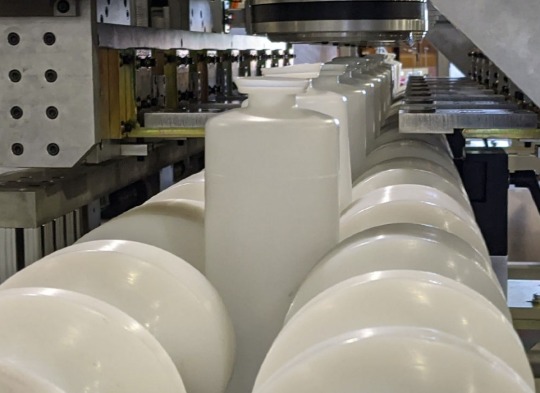
Attention all engineers and manufacturers!
Say goodbye to manual welding and hello to efficiency with lectro treat equipment from Lectro Engineering.
Increase productivity and save time with our cutting-edge technology. Don't miss out, schedule a demo today!
0 notes
Text
Was looking into the significance of Isaac, Yohan and Elijah's names in the symbolic of tdj's narrative. I'm wondering if tdj Isaac was named after Abraham's son because Jisang and his wife had him late or had trouble conceiving a child, making Isaac all the more special to his parents.
The irony of Yohan's arrival....a second son that should've been a blessing but turned out to be unwanted by both his parents
#the devil judge#tdj thoughts#jisang's catholic guilt also informing his treatment of yohan ? as the proof that he had sinned perhaps#and yohan reminding him of himself/maybe ressembling him physically#so isaac is everything jisang loved (eg when it's mentionned that isaac ressembled his mother) and yohan reminds him of what he despises#(himself)#poor yohan#born in the wrong place at the wrong time from the wrong people :(#this is very surface level idk i was not raised into christianity im not familliar with it so im just pondering#this also makes me want to write something around yohan searching for his birth mother thought it could be a bit ooc#xyz
26 notes
·
View notes
Text
Electroless nickel plating is a controlled chemical reduction nickel-alloy coating. Unlike other types of nickel plating, electroless nickel does not need an electric current and may deposit on non-conductive surfaces. It is widely used to improve corrosion resistance in industrial applications as a coating solution. Read the article to know more.
#Electroless Nickel Plating#Metal Coating#Corrosion Resistance#Metal Finishing#Surface Treatment#Plating Technology#Nickel Plating#Protective Coating#AGAS
0 notes
Text
How Liquid Painting Elevates Metal’s Visual Appeal
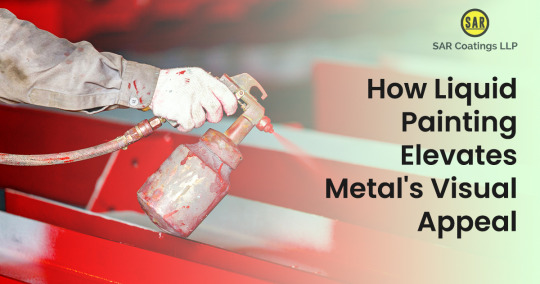
Metal is a versatile and durable material widely used in various industries, from automotive and construction to art and design. To enhance its visual appeal and protect it from corrosion, liquid painting has emerged as a popular and effective method. We will delve into the ways in which painting enhances the visual appeal of metal and the multitude of benefits it offers.
The Power of Liquid Painting
It is a technique that involves applying a liquid coating to a metal surface. This coating typically consists of a combination of resins, solvents, pigments, and additives. When the liquid coating is applied, it forms a protective layer that adheres to the metal and transforms its appearance.
1. Enhanced Aesthetics
One of the key advantages of liquid painting is the ability to enhance the aesthetics of metal surfaces. The wide range of available colors and finishes allows for endless possibilities in design and customization. Whether it’s a vibrant and eye-catching color or a subtle metallic sheen, liquid painting can transform a plain metal surface into a visually appealing work of art.
2. Protection Against Corrosion
Metal surfaces are susceptible to corrosion due to exposure to moisture, chemicals, and environmental factors. It provides an effective barrier against these elements, preventing rust and corrosion from forming. By sealing the metal surface, the paint acts as a protective shield, prolonging the lifespan of the metal and maintaining its visual appeal.
3. Durability and Longevity
Painting, a form of metal finishing, not only enhances the visual appeal of metal but also improves its durability and longevity. The paint layer acts as a shield, safeguarding the metal from scratches, abrasion, and fading. With proper surface preparation and application techniques, the painted metal can withstand harsh conditions, ensuring its visual appeal remains intact for years to come.
The Process of Liquid Painting
Liquid painting involves several essential steps to ensure a flawless and long-lasting finish.
1. Surface Preparation
Before applying the liquid paint, the metal surface must undergo thorough preparation. This includes cleaning the surface to remove any dirt, grease, or contaminants that may hinder the adhesion of the paint. Additionally, the surface may require sanding or priming to create a smooth and even base.
2. Application Techniques
Liquid painting offers various application techniques, including spraying, brushing, and dipping. Each method has its advantages depending on the size, shape, and intricacy of the metal object being painted. The goal is to achieve an even and consistent application of the paint to ensure a uniform finish.
3. Curing and Drying
After the paint is applied, the metal object goes through a curing process. This involves subjecting the painted surface to controlled heat or air circulation to facilitate the drying and hardening of the paint. Proper curing ensures the paint forms a strong bond with the metal surface, enhancing its durability and resistance to wear.
Enhancing Visual Charm
Liquid painting, also known as surface treatment, offers a myriad of benefits for elevating metal’s visual appeal. By enhancing aesthetics, providing corrosion protection, and ensuring durability, surface treatment has become a go-to method for transforming metal surfaces. Whether it’s a large industrial structure or a delicate metal artwork, liquid painting adds a touch of beauty and longevity. With its ability to create visually stunning finishes and safeguard metal from the elements, surface treatment has revolutionized the way we perceive and utilize metal in various industries. Its impact on enhancing the visual appeal of metal surfaces cannot be overstated.
For any clarifications or queries, please feel free to contact us:
Mobile: +91–9311813406
Email ID: [email protected]
Website: www.sarcoatings.com
0 notes